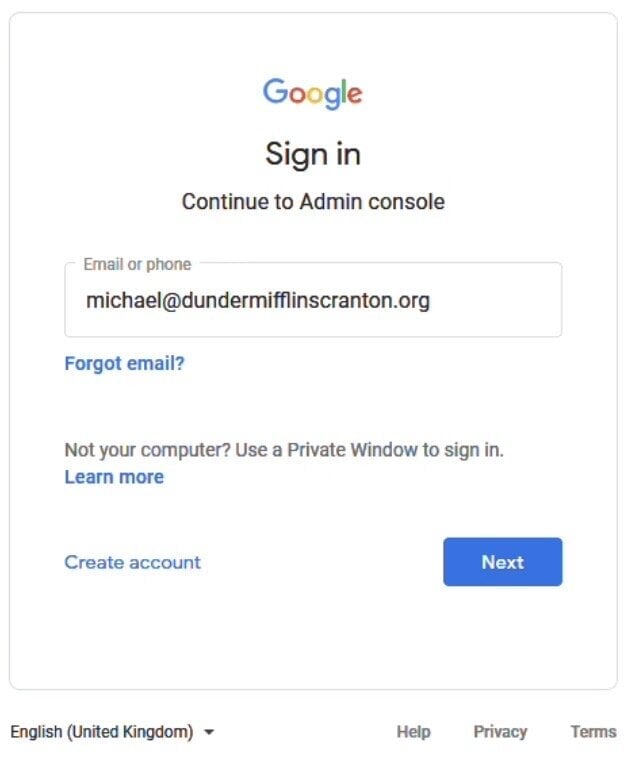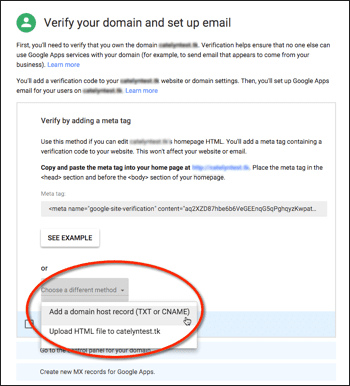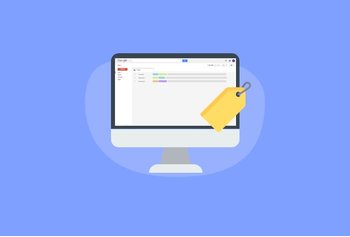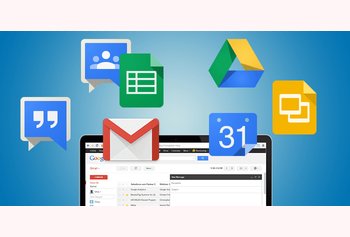The Complete Guide to Set Up Google Workspace for Your Organization

Table of contents
Everybody loves Google Workspace (formerly G Suite). But, why? It offers a very powerful set of tools to perform tasks effectively, collaborate with your teammates, and even connect with your customers.
Let’s show you how to set it up for your business.
Table of Contents
- What is Google Workspace – And Why Do You Need It For Your Business?
- What To Do Before Creating A Google Workspace Account
- How To Create A Google Workspace Account For Your Business
- The Google Admin Page – Three things you need to do
- How Much Does Google Workspace For Business Cost?
- Conclusion
What is Google Workspace – And Why Do You Need It For Your Business?
Before we look at how to set up a Google Workspace account , let’s see what exactly it is.
Google Workspace is a set of enterprise-grade Google Apps you can use to run your business. It includes the business version of:
- Gmail, Google Calendar, and Hangout Chats.
- Google Docs, Google Sheets and Slides.
- Google Drive and Google Keep.
… and any more productivity tools.
But what exactly is the difference between the free version and business version of these Google Apps?
The fundamental difference is that the Google Apps within the Google Workspace (GW) for business has features to help you collaborate your teammates within your company. And these features are generally not available in the free version.
For example:
- In Gmail for business, you get professional email addresses ending with your company name i.e. [email protected]. But in the free version, your email address has to end with ‘@gmail.com’.
- In the GW for business version of Google Drive, you get 30GB of storage space per user (the bigger plans include unlimited storage). But in the free version, you get only 15GB.
- In the GW for business version of Google Calendar, you can create multiple calendars for different purposes – each with its own members, schedules, appointments, and more. But in the free version, you only get one calendar to work with.
But the biggest advantage Google Workspace for business is:
Awesome integrations: You can quickly create email accounts for members of your company/business – and give them access to Gmail and Google Drive – and all important files can be easily accessed by the members of your organization. You can also set custom accessibility for your teammates.
In addition, Google apps work seamlessly with each other.
For example, you can simply create a document in Google Drive, share it with your team on Gmail and in one click, start a video call to discuss the contents of that document.
That’s the power of Google Workspace for business. It makes integration with other Google apps seamless and improves collaboration for your entire team.
Recommended read: Gmail vs Outlook: Which Email Service to Choose
What To Do Before Creating A Google Workspace Account
Before you can sign up for Google Workspace, you’ll need three things ready to go:
- A working credit card: While you do get a 14-day free trial when you sign up for Google Workspace, you’ll still need to enter your credit card details. This will keep your account active after your trial ends.
- An alternate email address: During sign-up, you’ll be asked to enter your alternate email address (ex: your personal mail ID). This is for security purposes and can help you if you’re unable to access your account.
- A domain name: You don’t need a website to run your Google Workspace account, but you do need a domain name. It will be used as an extension of all the emails in your Gmail for business account instead of the standard ‘@gmail.com’. Although Google doesn’t explicitly mention it, but please make sure that your domain is registered online through an internet domain registrar like godaddy.
Users have found difficulty creating a Google Wotkspace for Business account without a verified domain name. Here’s what an user suggests someone, on reddit, having difficulty to set up a GW account without a verified domain name:
How To Create A Google Workspace Account For Your Business
Step 1:To start, head to workspace.google.com. On this page, click on the blue ‘Start Free Trial’ button.

Step 2: You’ll land on the sign up page. Here, enter your first & last name – and your current email address. After typing this info, click ‘Next’.

Step 3: In the next step, you need to choose your businesse’s domain. If you do not own a domain, select the first option “Get a new custom domain”. Then click on “Continue with this method”

Conversely, if you already own a domain domain, you can select the second option.
Step 4: Next, enter your domain name by typing it out. Click on the magnifying glass icon to search for your domain.

Domains can cost as little as $12 a year to as much as $50 a year. That’s because every domain has its own value, and therefore, no fixed price.
Also, note that not all domain names that you type in will be available. So it might take a few tries until you find the perfect name.
Once you find it, click on it and you’ll reach this page. Click ‘Next’.

Step 5:You’ll land on a page where you’ll have to enter the exact address of your business. This is required to register your domain. Fill the form and click ‘Next’.

Step 6:The next page will ask you to create your first Google Workspace username.

Choose any username you like. It can be your name, the department in which you work or even something as simple as hello.
After that, create a secure password. We recommend you add a capital letter, a special character and a number in your password to make it as safe as possible.
Click on ‘I’m not a robot’ – and click on ‘Agree and Continue’.
That’s it! You have created your Google Workspace account

You’ll land on the familiar sign-in screen. Sign in to your account. Once you sign in, you’ll be asked to review your Google Workspace plan. Confirm and click next.

You’ll be taken to the checkout page. Here, enter your credit card details, review all the information and click ‘NEXT’. At this point, your account has been created and you can now set it up.
The Google Admin Page – Three things you need to do
Once you’ve signed up for a free trial, you’ll land on the setup page which will look something like this.

In the setup window, you’ve got three things to do:
- Verify your domain address: Before you can use Google Worskpace, you need to verify with Google that the domain name you’ve entered is yours.
- Add new users:After your Gw account is active, you can add new users from your company to Google Workspace.
- Create groups for users: Once you’ve added new users, you’d want to divide them into groups for better organization.
In this section, we’ll show you how to go through these steps one by one.
Don’t worry. It isn’t as hard as it seems (except maybe the domain part).
1. Verify your domain address
Before you can use any apps inside Google Workspace, you need to verify your domain name. We’ll quickly list out the steps which will show you how to do that.
- In the setup wizard, you’ll find the option to verify your domain. Click on it and the tab will expand. At the bottom of the tab, you’ll find the option to choose another tab. Click on it and select ‘Add a domain host record (TXT or CNAME)’.

- Next, copy the code which appears in the value/answerdestination/ field:

- Once that’s done, sign in to your hosting account, open the DNS section and click on ‘Add custom records’. There, paste the code you just copied. If this sounds complicated, click here to go to Google’s highly exhaustive table of contents where you’ll find step-by-step instructions on how to verify your domain name via your dedicated server hosting provider.
Once you’ve verified your domain, your account will become active and you’ll be able to send/receive emails on your Google Workspace for business account.
It is important to note that, even if you are on a trial period, it is important to verify your domain name. Here’s what an user says on Reddit:
“You will need to verify your domain within the first 9 days of your trial period otherwise the domain can be cancelled by Google.“
–user review on reddit
2. Adding new users
Google Workspace for business is a suite of tools that’s meant to be used by a group of professionals – not just an individual person (although you can certainly do that). With GW, collaboration is the name of the game.
That being said, here’s how you add a new user to your Google Worskspace for business account:

- Click on the ‘Users’ icon on the admin panel.
- You’ll see a large yellow ‘+’ icon on the next page in the upper-left corner. Click on it.
- To add a new user, you just need to type in their first and last name. If you want, you can add their profile picture and secondary email (their personal one) as well.
- Create a password for your new user – or click on ‘Automatically Generate A Password’ to let Google create a strong password for you.
- Once you’ve added the details and created the password, click on ‘Add New User’ to add them to your Google Worspace account.
This will add the user to Google Workspace where you can give them access to the GW Apps.
3. Creating Groups for your users
Once you add your users, you want to divide them into groups. This will make it easier for you to control which users can use which app, which information they can access and in general, what activities they can perform on your Google Workspace account.

Here’s how you can create a new group in Google Workspace:
- Go to the Admin Panel and click on ‘Groups’. If you can’t see that option, click on ‘More Controls’ at the bottom of the Admin Panel.
- Next, click on the ‘+’ icon on the bottom-right corner of your screen.
- Choose a name for your new group. It can be anything like Sales, Tech Support, HR, etc.
- Create an email address for the group. For the sake of simplicity, make the email name same as the group name. For example, the email address of the Customer Support group can be [email protected].
- Set the desired access level for your group. Do you want it to be public, restricted or something in between? All in all, there are five access levels you can assign a group.
Once you set up the group, click on the ‘Create’ button. Then, simply go back to ‘Users’ and add the people you want to your new group.
Recommended read: Google Groups: The Ultimate Guide
So, to recap:
- Go through the signup page: Enter your organization name, choose a domain, and put in your credit card info to get started.
- Verify your domain name:To start using Google apps, verify your domain name with Google.
- Add new users and create groups for them:Add your team members/employees to your GW account and sort them into groups on the basis of their roles within your team/company.
How Much Does Google Workspace For Business Cost?
Google Workspace’s Business Starter plan is priced at $6/month/user. As part of it, you get:
- The complete set of G apps with full enterprise-level functionality.
- 30 GB of cloud storage per person.
- Basic admin-level controls that let you add/remove users, enable security and more.
- Google Meet with admission upto 100 participants.
If you want more features, you’ll have to subscribe to the Business Standard plan. It is priced at $12/month/user and unlocks additional functionality such as:
- Cloud Search, a feature that searches through all GW apps to get you the results you want.
- 2 TB of cloud storage per person.
- Advanced admin features that let you set how long emails and chats can be retained for, where your data is stored, and more.
- Google Meet with admission upto 150 participants along with the option to record meetings.
This is also the most recommended plan according to Google.
If you want even more cloud space, security and control, Google offers other plans at a higher cost. The BusinessPlus plan is priced at $18/month/user. It offers 5TB of cloud space and robust security features amongst other things. And the highest plan known as Enterprise has a custom pricing option. You’ll need to contact Google’s Sales team to know the exact quotations.
For a detailed comparison of the Google Workspace for Business pricing plans, check this out.
You get a 14-day free trial across all the plans. At the start, we recommend you get the Basic plan. It includes all the necessary features you need to run your business. You can upgrade to a higher plan later.
Conclusion
By following these steps, you will be able to create your Google Workspace account for your business. This means that you and other users within your GW account can now start using Google apps to collaborate on work-related tasks and run your business efficiently.


































